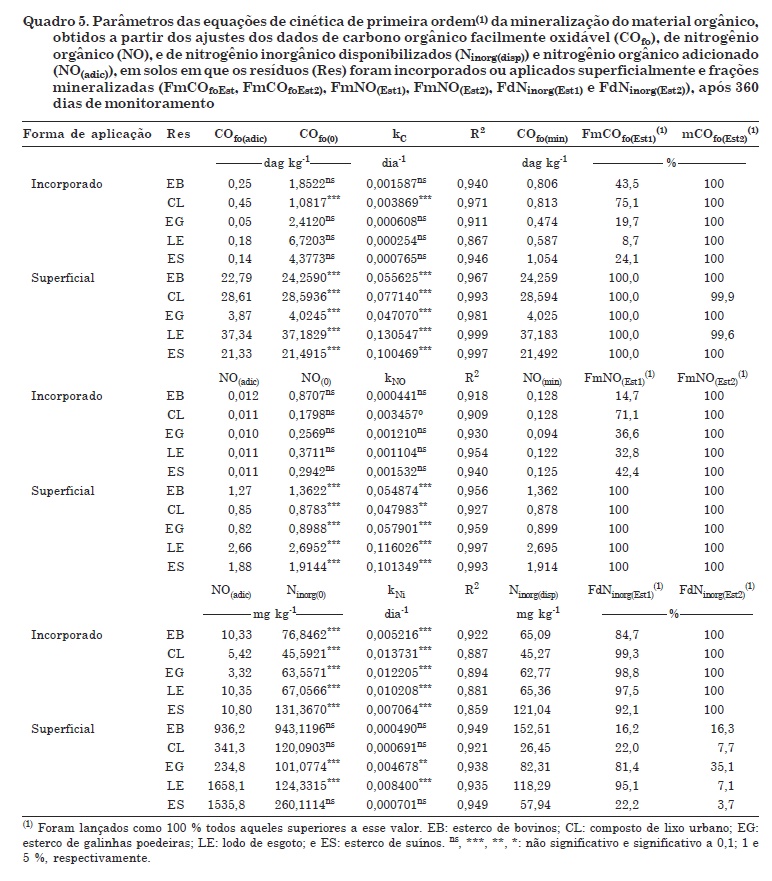The definition of application rates of organic waste from agricultural, urban or industrial sources, with a view to agricultural re-use must be based on the soil mineralization rate. The objective of this study was to test different estimation methods of mineralized fractions of cattle, pig and poultry manure, as well as of sewage sludge and municipal solid waste compost, under field conditions, incorporated or applied to the surface of a Red-Yellow Latosol (LVAd). The experiment was conducted for 360 days and soil/residues were monthly sampled for analysis of readily oxidisable organic carbon (OCro), total N, ammonium and nitrate concentrations, allowing the estimation of organic N (ON). The estimates of mineralized fractions of surface-applied residues were more biased than of incorporated wastes, as shown by different soil/residue proportions collected during the monitoring period. It is recommended to calculate the mineralized fractions using OCro data of the soil/residues, because the inorganic N and therefore ON is strongly influenced by rainfall, resulting in unreliable values. After 120 days of residue incubation, the mineralized fractions of OCro and NO, estimated based on the applied organic material (OCro or ON), were over 89.3 %, for incorporated and surface-applied wastes.
decomposition rate; organic matter; degradation








